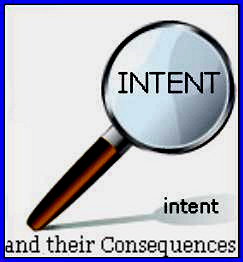Up to the introduction of WESA on March 31 next, a disputant of an estate could file a caveat which was good for six months, and which could be renewed as many times as necessary for a further six months at a time.
Rule 25-10 makes many significant changes to that of dispute replace caveats, first and foremost by changing their name to Notices of Dispute.
The Notice of Dispute will still prevent the issue of an estate grant, unauthorized nation to obtain state information, and authorization to obtain receiving information, and the receiving of a foreign grant under Rule 10 (8).
It can however only be filed once S 10 (2)
the new Form 29 requires more information on the grounds that the notice is filed than previously necessary under a caveat.
It may be amended once with leave of the Court 10(4)
10(6) Allows for a Court to renew a Notice of Dispute for any time it considers appropriate on certain criteria, no prejudice being one of them
Under S 10(10) the Court may remove a Notice of Dispute on the grounds of S 10(11), that the filing is not in the best interests of the estate.
Rule 10 (12) States that the N0tice to Dispute ceases in one year from the date of filing, subject to it having been renewed.
NOTICES OF DISPUTE
Notice of dispute
(1) To oppose the issuance of an estate grant, an authorization to obtain estate information or an
authorization to obtain resealing information or to oppose the resealing of a foreign grant, a person to
whom documents have been or are to be delivered under Rule 25-2(2) must file a notice of dispute that
accords with subrule (3) of this rule before the earlier of
(a) the issuance of an authorization to obtain estate information or an authorization to obtain resealing information, and
(b) the issuance of an estate grant or the resealing of a foreign grant
Only one notice of dispute to be filed
(2) A person must not file more than one notice of dispute in relation to any one estate.
Contents of notice of dispute
(3) A notice of dispute referred to in subrule (I) must be in Form P29, must provide an address for
service of the disputant, which address for service must be an accessible address that complies with
Rule 4-1(1), and must disclose
(a) that the disputant is a person to whom documents have been or are to be delivered under Rule 25-2(2), and
(b) the grounds on which the notice of dispute is filed.
Amendment of notice of dispute
(4) A notice of dispute may be amended once without leave of the court, and after that only with leave of the court-Amendment of notice of dispute
(5) Rule 6-1 (2) and (3) apply to an amendment of a notice of dispute without leave of the court and, for that purpose, a reference in that rule to a pleading is deemed to be a reference to the notice of dispute.
Renewal of notice of dispute
(6) The court may renew a notice of dispute, for any period the court considers appropriate, as
follows:
(a) if the application for renewal is brought before the notice of dispute ceases to be in effect, if the court is satisfied that it is appropriate to make an order for renewal;
(b) if the application for renewal is brought after the notice of dispute ceases to be in effect, if the court is satisfied that
(i) there were good reasons that the application for renewal could not be brought before the notice of dispute ceases to be in effect,
(ii) substantial prejudice would be suffered by the person seeking renewal of the notice of dispute if the order for renewal is not made, and
(iii) no other person interested in the estate would suffer substantial prejudice if the order for renewal is made.
Application for renewal of notice of dispute
(7) Subject to Rule 8-5(6), an application to renew a notice of dispute filed in relation to an estate
must be made on notice to
(a) each person who has submitted for filing a submission for estate grant, or a submission for reseating, in relation to the estate,
(b) each person who has filed a notice of dispute in relation to the estate, and
(c) any other interested person to whom the court directs notice be given.
No grant while notice of dispute in effect
(8) While a notice of dispute is in effect in relation to the estate of a deceased, the registrar must
not, with respect to that estate,
(a) issue an estate grant, an authorization to obtain estate information or an authorization to obtain reseating information, or
(b) reseal a foreign grant
Withdrawal of notice of dispute
(9) A disputant may withdraw a notice of dispute by filing a withdrawal of notice of dispute in
Form P30.
Application to remove notice of dispute
(10) A person who is interested in an estate in relation to which a notice of dispute has been filed,
including, without limitation, an applicant for an estate grant or for the resealing of a foreign grant, may
apply on notice to the disputant for an order removing the notice of dispute.
Grounds on which notice of dispute may be removed
(11) On an application under subrule (10), the court may, by order in Form P31, remove a notice of
dispute if the court determines that the filing is not in the best interests of the estate.
When notice of dispute ceases to be in effect
(12) A notice of dispute in relation to an estate ceases to be in effect as follows:
(a) subject to paragraph (b), on the date that is one year after the date on which the notice of dispute was filed;
(b) if the notice of dispute has been renewed under subsection (6), at the end of the renewal period;
(c) if the notice of dispute is withdrawn by the disputant under subrule (9);
(d) if the will in relation to which the notice of dispute relates is proved in solemn form;
(e) if the court orders, under subrule (11) or otherwise, that the notice of dispute is removed.




